ACME Bicycle Company: Ace Fitters
Jonathan Blyer is the first of a lot of fitters I’m going to profile here, to show you what good fitters look like and, to the point, what good fitting looks like in your area. Jon’s company is called ACME Bicycle Company and he and his business partner are in Brooklyn, NY.
I gave Jon and a few other fitters I admire some questions about their operations and then I gave them a warning: “You don’t have my last question yet. It’s a toughie. I’m going to report your answer to our readers just as you write it to me.” This is sort of a Bar Exam question for fitters, I explained. “You’re going to look competent, or out of your depth, in front of a few thousand readers. Are you sure you want me to profile you?”
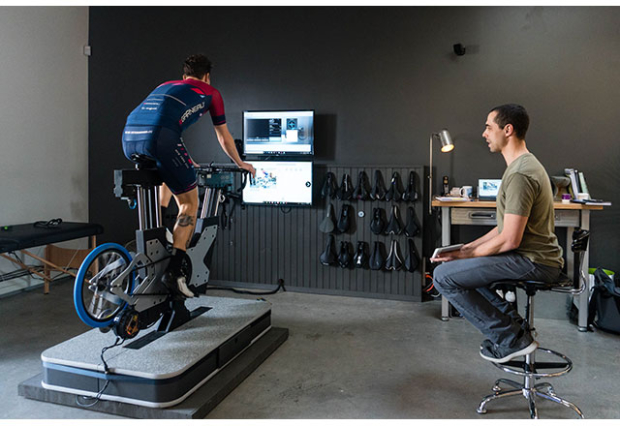
With Jon it was pretty easy. There is no question I could ask that he couldn’t answer at least as well as I could. Here’s an overview of his operation with FuBAR questions (Fitter Bar Exam questions) below.
History & Profile: ACME Bicycle Company was founded in 2012 and Jon ran it by myself until a few years ago when he brought in an employee who is now a business partner, Colin Tanner. (Jon is in the photo above. Colin is the guy who looks like a young Viggo Mortensen in the photo below.) They perform about 400 fits a year. ACME used to do about 70 percent triathlon fits but are now down to about 30 percent tri fits with road racing and gravel making up the balance. That’s a market reality, not a shift in interest or focus.
They have one location currently in a neighborhood of Brooklyn called the Gowanus, and are “starting seriously to think about our next steps,” which I take to mean expansion of some sort.
Bike Sales: ACME sells bikes from Dimond, Moots, Parlee, Allied and DeRosa, and saddles from pretty much every saddle manufacturer.
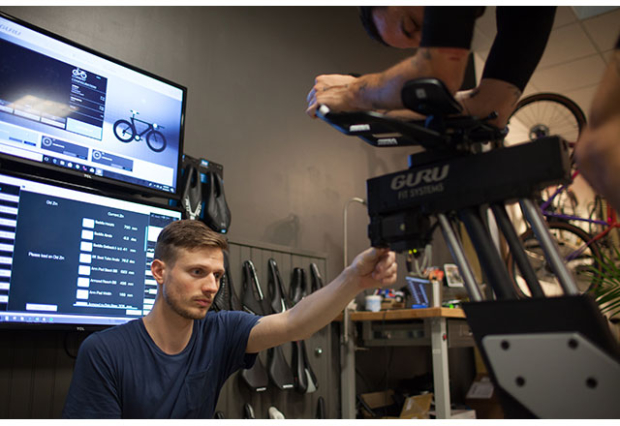
Wrenching: ACME also offers mechanical service.
Education and Background: Jon has been an instructor both for GURU as well as F.I.S.T., that is, he has significant background in training other fitters. He also holds certifications from Retül and is an IBFI level 4 certified fitter. Colin holds certifications from Retul and Guru and is a USAC certified coach.
Tooling:
– Fit Bike: ACME has both a Guru DFU 2.0 and a DFU 1.0.
– Motion Capture: Retul with Retul V7 software; Guru’s Range of Right.
– Quick Change Seat Clamp: A SwitchIt is permanently mounted on the DFU 1.0 and they use a prototype of the ACME Seat Cleat on the DFU 2.0 (this is Jon’s own manufactured product that competes with the SwitchIt.)
– Pedal/Shoe: Speedplay’s fit kit, a broad selection of insoles and wedges.
– Coffee: Quick Mill Silvano espresso machine with a bottomless double portafilter and a Mazzer mini grinder, “we only serve the good stuff.” (Bonus points for this.)
Other notable stuff: 60 days free follow up for fits and 30 days money back or exchange on saddles. They do mobile fits and deliver custom-built bikes. Jon has flown across the country to deliver bikes, and will soon fly to the Middle East to deliver another and to make sure it’s dialed in for the rider. (Can't imagine who that might be for!)
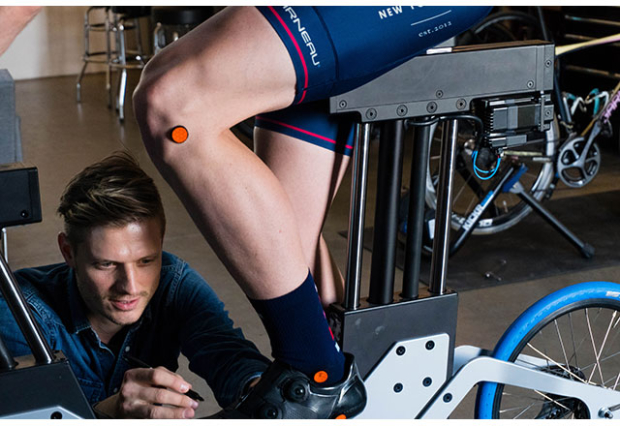
Fit Philosophy: Above, that’s the easy stuff. Necessary! But easy. Now comes the hard stuff. I’m asking every fitter in this series what “drives” the fit decisions the fitter makes. This requires a precise answer. “What causes you to change or decide on a specific fit coordinate?” No fluff answer to this will suffice. Here’s what Jon wrote back:
”Our process on the DFU is very much an advanced trial-and-error process and we essentially follow the F.I.S.T. protocol. We start each client off in a position that is pretty relaxed and we gradually work them into something a bit more performance oriented until we start to see them breaking down in some way, then we back off a little bit. An example of this would be our method of finding arm pad stack; we start off obviously too high and gradually lower the aerobars a few mms at a time (all while pedaling at a reasonable load, of course), carefully watching and listening. When their form starts to break down, we raise the bars back up a little bit. We apply similar approaches to saddle height, cockpit distance and weight distribution / effective seat angle.”
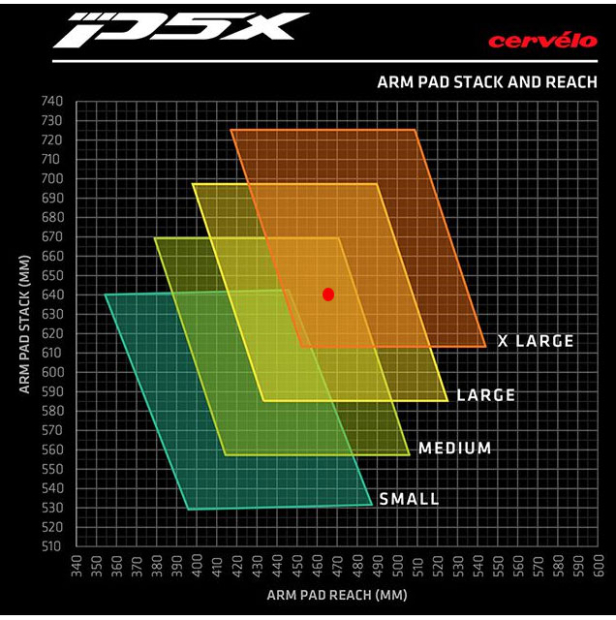
Okay, that's what Jon wrote me. This is the first in a series, and I chose to begin with Jon because I have absolute confidence in him as a fitter and as someone able to answer these questions. Also, I expect that Jon will help me form my questions better as this series progresses by his answers. What I was looking for was something more succinct and concrete, as in: “I’m a Retül fitter, Retül’s obvious metric is body angles, we move the saddle and the handlebars according to a combination of the fitter’s eye and the rider’s sense of comfort, but always within Retül’s angular ranges that express orthodoxy.” That answer, however, does not mention aerodynamics. When I profile Jim Manton at ERO I promise aerodynamics will be a "driver" in his answer. Jon’s answer above is fine. And, he’s a retail fitter and I’m not. I have the luxury of not seeing the problems he sees. Had I asked that question with more precision I'd have gotten an answer with the precision I hoped from my ill-worded question.
FuBAR Question:
Here was my tough question for Jon: “I have a Pad-center Y/X of 640mm and 505mm respectively. My saddle height, BB to saddle top, 4cm behind the nose, is 785mm, and my split nose saddle setback is -30mm (plumb line distance, back from the BB). I ride 170mm cranks. I think I want to jump on the disc brake tri bike bandwagon. That’s all I’m going to tell you unless you need some data piece I haven’t thought to provide. I’d like 2 complete bike solutions from you. With granular detail. Extra credit if one of them is a mortal bike that doesn’t have a proprietary prescriber.”
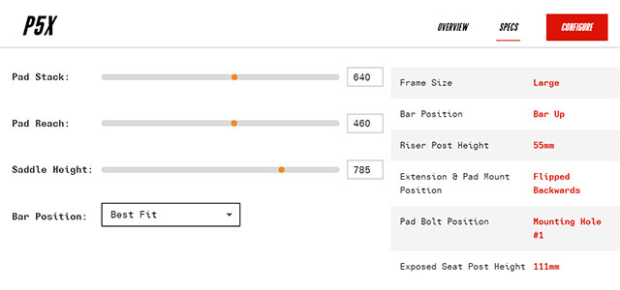
FuBAR Answer from Jon: "My best suggestion based off of what you provided and considering that I'm only looking at Disc Brake Equipped Tri bikes would be a Cervelo P5X in a size large. The chart for the P5X uses the back of the pad as the reference point so I converted your arm pad reach of 505mm to 460mm. [Jon provided a scan of the P5X Pad Stack/Reach prescriber which I've slotted in here, and I placed a red circle denoting my position.]
"These coordinates land you in Medium, Large or XL territory but you have the most wiggle room in a size Large for future adjustability. The XL would probably ride a bit more stable than the large, and you still have a tiny bit of adjustability so that would be a consideration as well if you are a nervous bike rider and want a bike that might ride a little less twitchy. I would only prescribe this if I was 99% certain that your arm pads didn't ever have to go further back because there isn't much room left.
"Here is the set up from the P5X online tool, there isn't much more that I can add, they do a great job with this:
[Jon provided a scan of the P5X tool with the slider, that I haven't seen – pretty cool – that gives you a granular prescription of the front end; that screenshot of it is just above, set to my measurements, with the prescription delivered.]
"You have another good option, save for possibly the arm pad width spacing. That possibility is the new Cannondale Super Slice. I got the charts for this from Damon and Nathan and they are attached to this e mail in a word document. [Which I got from Jon.]
"You would do well on a 56 with this bike from a pad stack/reach perspective. This bike is available with three different stem lengths (60,90,120). You can also reverse the pads on this bike to change their fore/aft positioning. Note that changing the stem length requires you to replace the hydraulic hoses and bleed the system, making a stem change quite an ordeal. I think it took my mechanic about 4 hours when he's done it. The extensions on this bike use a collet system with the collet bonded to the extension and they are NOT compatible with any other 22.2 extensions, another thing to consider. If they are cut too short, as we've seen, you are on the hook for getting new extensions.
"Your set up on a size 56 would be with the 90mm stem with the pads in the aft position and 50mm of spacers between the arm pads and the basebar. This puts you within a few millimeters of your target numbers.
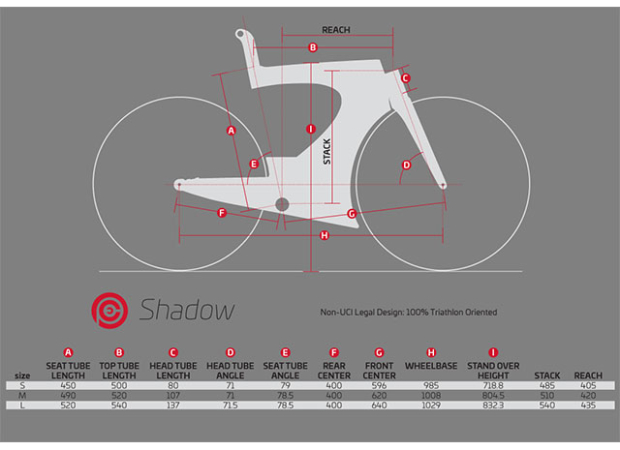
Jon also showed me how I'm a, “Ceepo Shadow R in a size Large (Reach 435, Stack 540) with a Profile Design Aeria or Aeria Ultimate bar. The Aeria Ultimate bar has massive fore/aft adjustability but my math is based on the back of the pad being 60mm behind the bar center which is roughly in the middle of the adjustable range. With this pad fore/aft position, you'll need a 90mm x -17 degree stem, a 10mm headset cap, no headset spacers above the cap and 10mm of spacer below the arm pads, putting the vertical distance between the pad and the bar center at 70mm. With this set up you should get your stack exactly and the reach will only be off by 4mms.”
The answer above is why Jon Blyer is the first fitter I’m recommending in this series. What makes bike fit a science, rather than a black art, is the ability to answer questions using math when math beats intuition. Answering with specificity. What I find with the best fitters is that I can send you to any one of them and you’ll come out with the same position and a similar list of bikes that will match the position the fitter placed you in.
And, yes, the solutions Jon recommended are exactly the sizes I ride in each bike with the precise configs on each bike.
I'll be "traveling" around the country, in a virtual tour of fitters, city-by-city, and to other countries. Maybe I'll mix in a little culture, Parts Unknown but we'll be enjoying bike fits instead of cuisine. You can read more about ACME Bicycle Company.


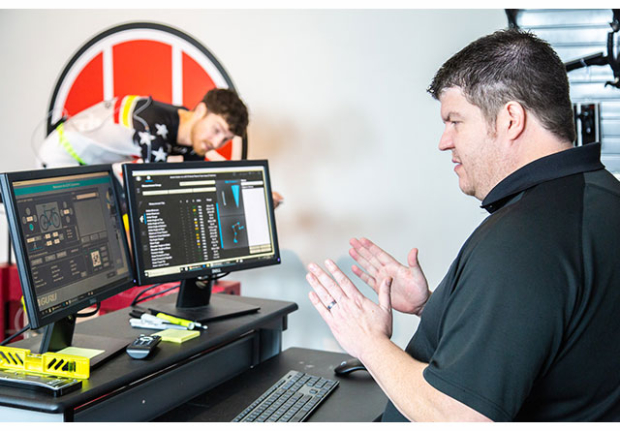

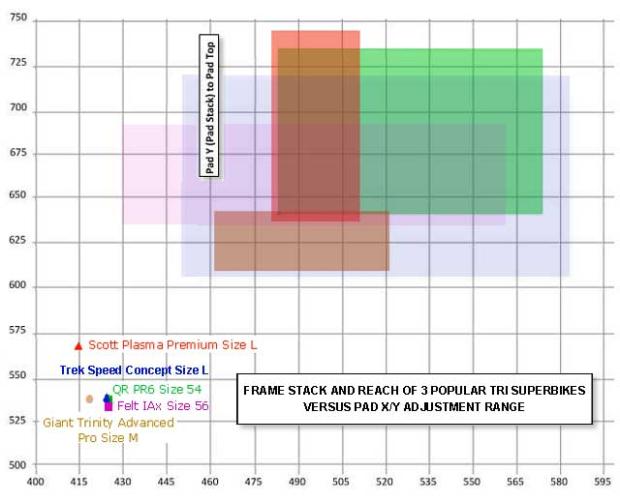
Start the discussion at slowtwitch.northend.network